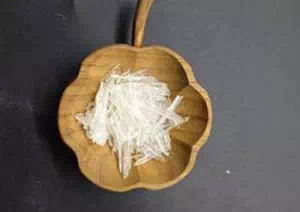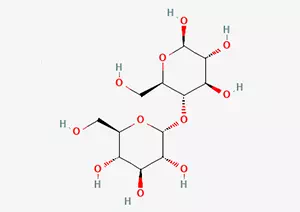All Categories



maltose CAS 69-79-4 Maltose Chinese, maltose, CAS 69-79-4, Maltose Chinese
Appearance: Usually colorless crystals, commonly in the form of containing one molecule of crystalline water, and the coarsely processed ones are thick syrup-like.
CAS : 69-79-4
Formula : C12H22O11
Mol. wt. : 342.3
EINECS : 200-716-5
| CAS | 69-79-4 |
| Molecular formula | C12H22O11 |
| Molecular weight | 342.3 |
| EIENCS | 200-716-5 |
| Form | / |
| Melting point | 110 °C |
| boling point | 397.76°C (rough estimate) |
| Density | 1.5400 |
| Solubility | Very soluble in water; very slightly soluble in cold ethanol (95%); practically insoluble in ether. |
| PKA | / |
| Color | / |
| Storage temp | Sealed in dry,2-8°C |
Food industry
Sweetener: It can be used directly as a sweetener, but due to its relatively lower sweetness compared to sucrose, it is often used in combination with other sweeteners.
Maltose syrup: It can be prepared into maltose syrup and has a wide range of uses, being applied in various fields of the food industry, such as solid food, liquid food, frozen food, colloidal food (if frozen), etc. It is mainly used for processing caramel sauce color and candies, fruit juice beverages, wine-making, canned food, bean paste, soy sauce, etc. Malt syrup contains a large amount of dextrin and has good anti-crystallization properties. It will not have crystals precipitate in frozen foods and also has the effect of preventing other sugars from crystallizing, which can extend the shelf life of food. It has good fermentability and is widely used in the production of bread, pastries and beer. It has the function of preventing starch from coagulating and aging, and can increase the shelf life of jelly, jam and canned food with starch added. It has low sweetness, low hygroscopicity and high moisture retention, which increases the moisture retention of food.
Pharmaceutical industry
Pharmaceutical excipients: They can be used as fillers and flavoring agents.
Other uses: Malt syrup can be taken directly. It can promote intestinal peristalsis to supplement the carbon source and energy needed by the body. Maltose intravenous injection can inhibit the growth of putrefactive bacteria, thereby reducing the production of toxic metabolites and playing a role in protecting the liver.
Other fields: It can be used as a biological culture medium, a polysulfide stabilizer, and a brown standard for colorimetric determination in analytical chemistry, etc.
* Prompt reply and 24 hours online, professional team to provide best price and high quality product.
* Sample testing support.
* Every batch of products will be tested to ensureits quality.
*The packing also can be according the customers` requirment.
*Any inquiries will be replied within 24 hours.
*we provide Commerical Invoice, Packing List, Bill of loading, COA , Health certificate and Origin certificate. If your markets have any special requirements, let us know.